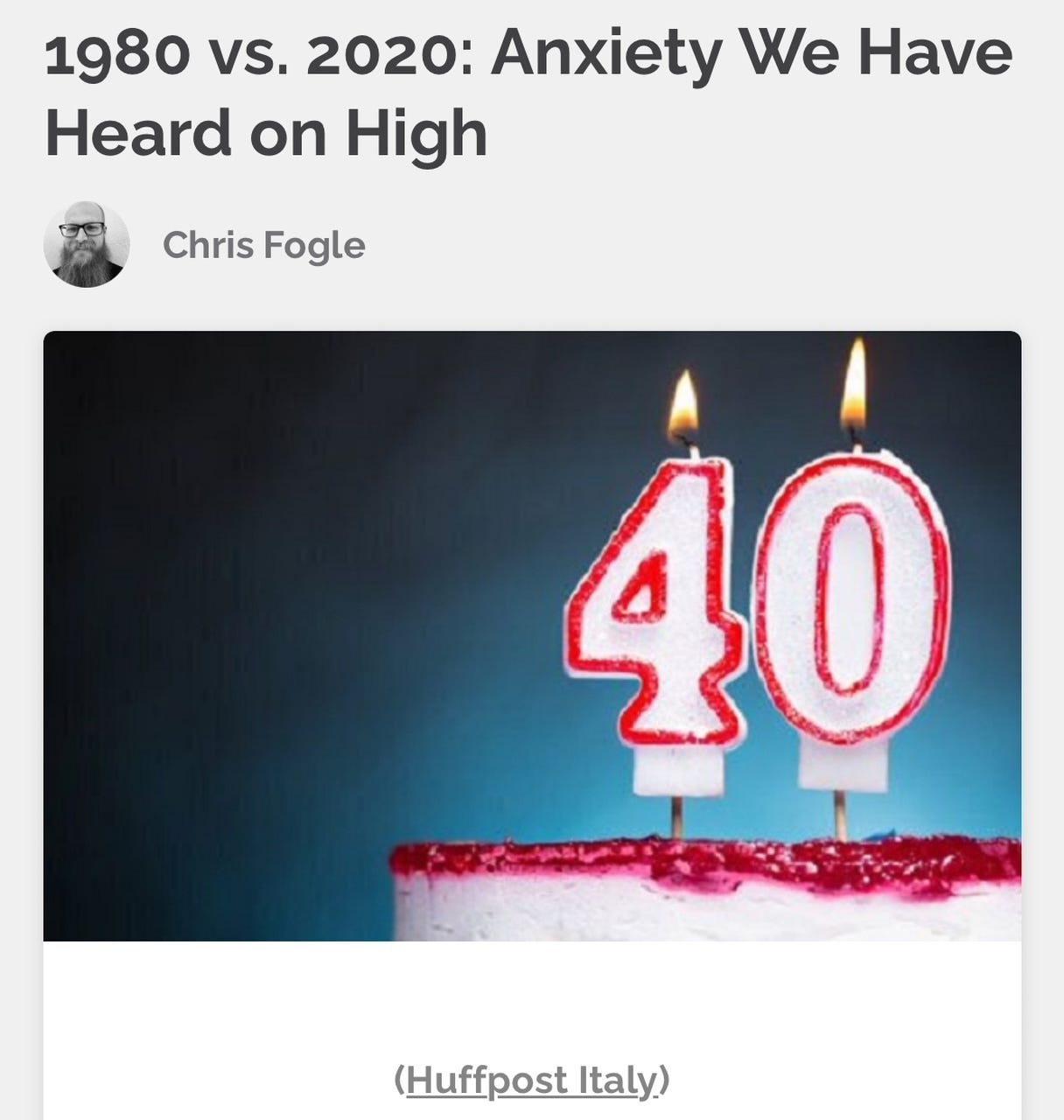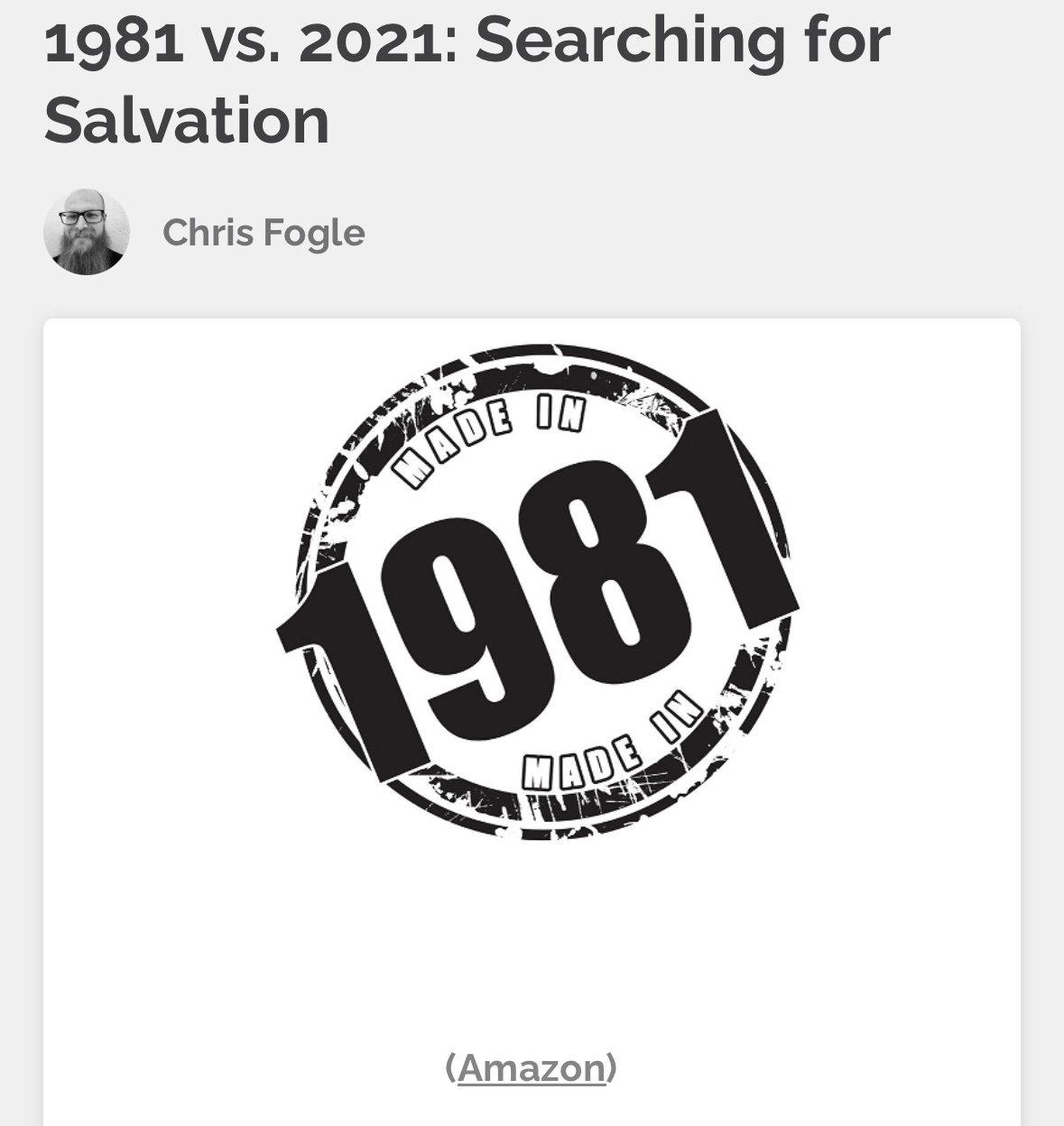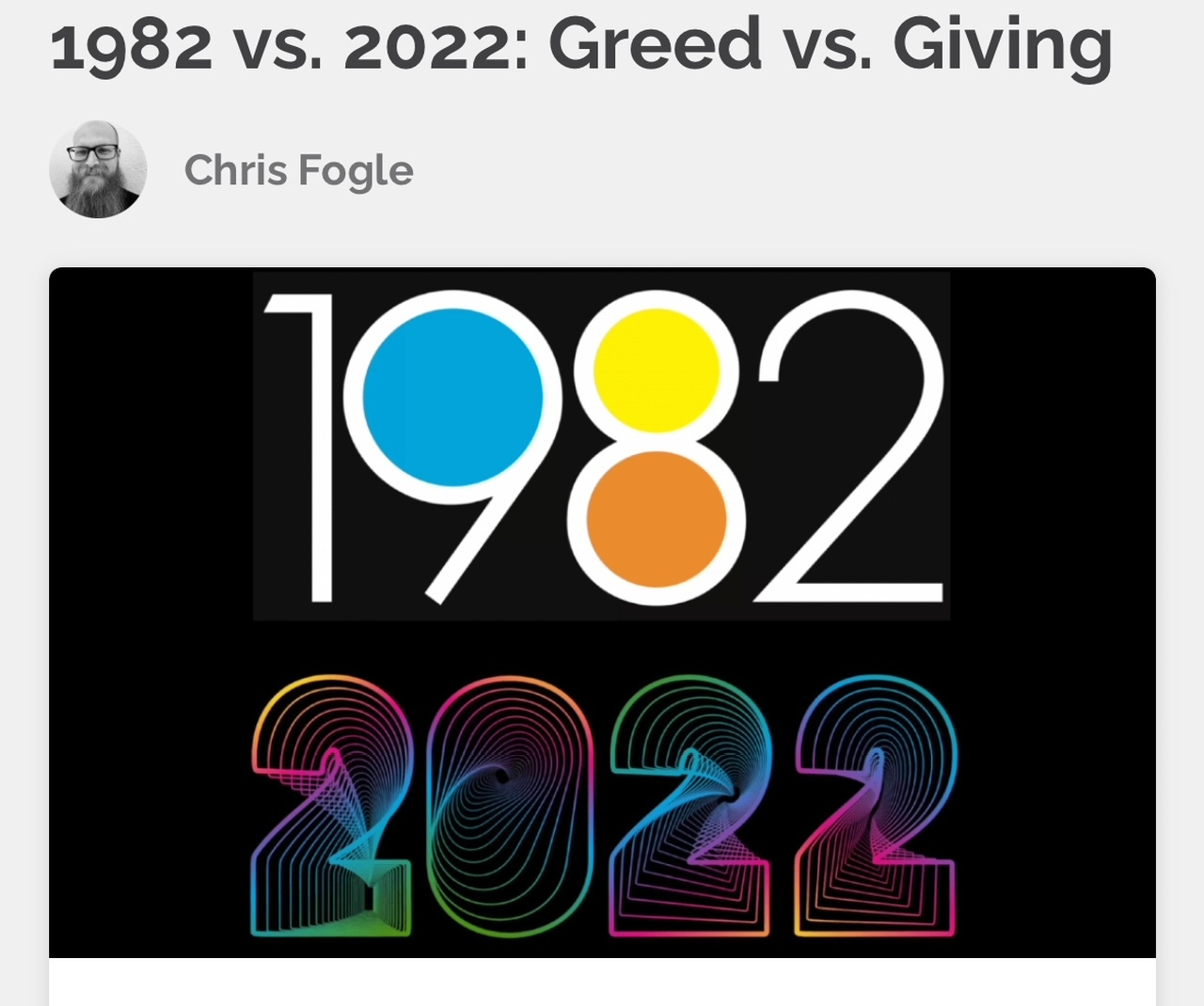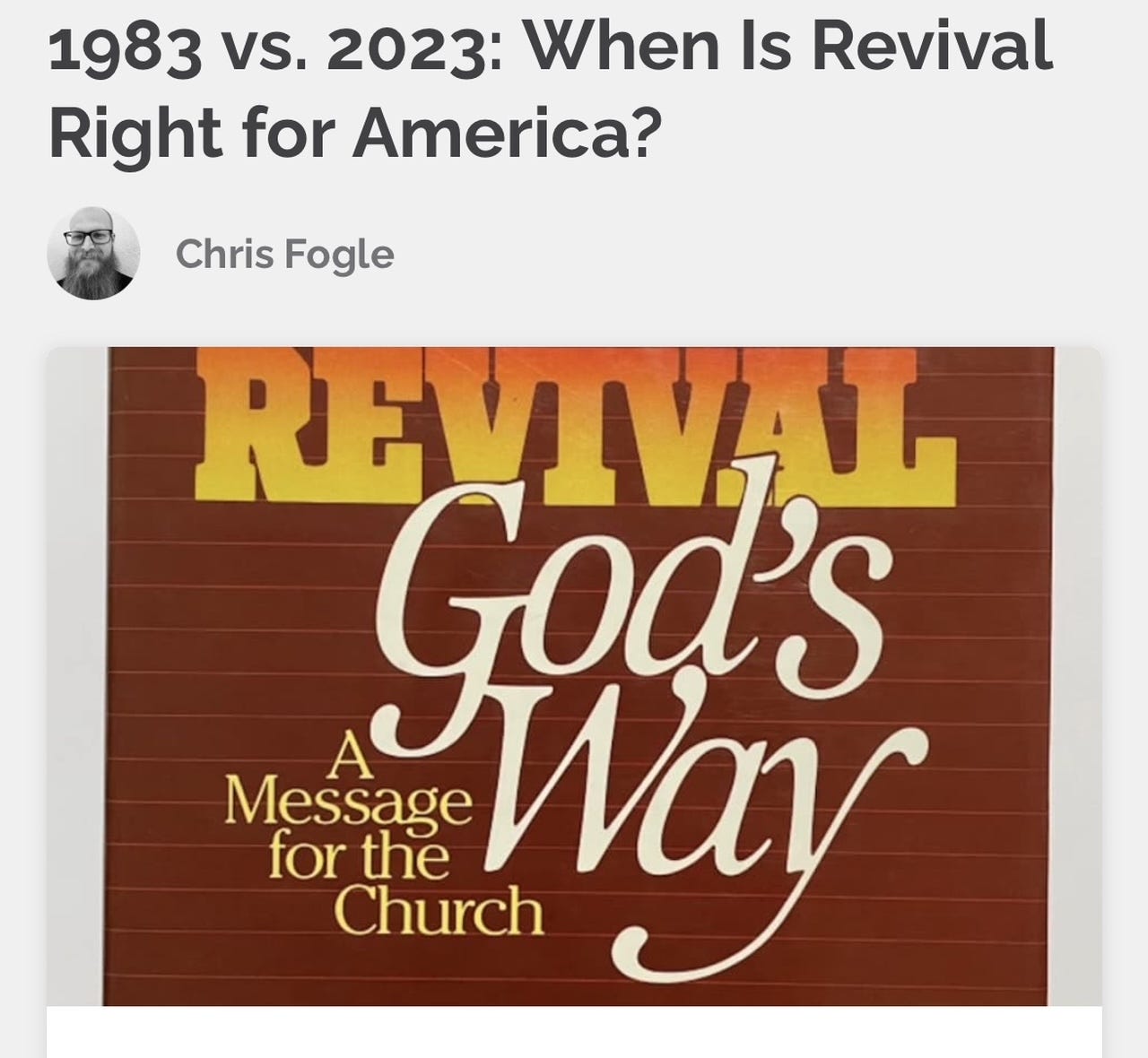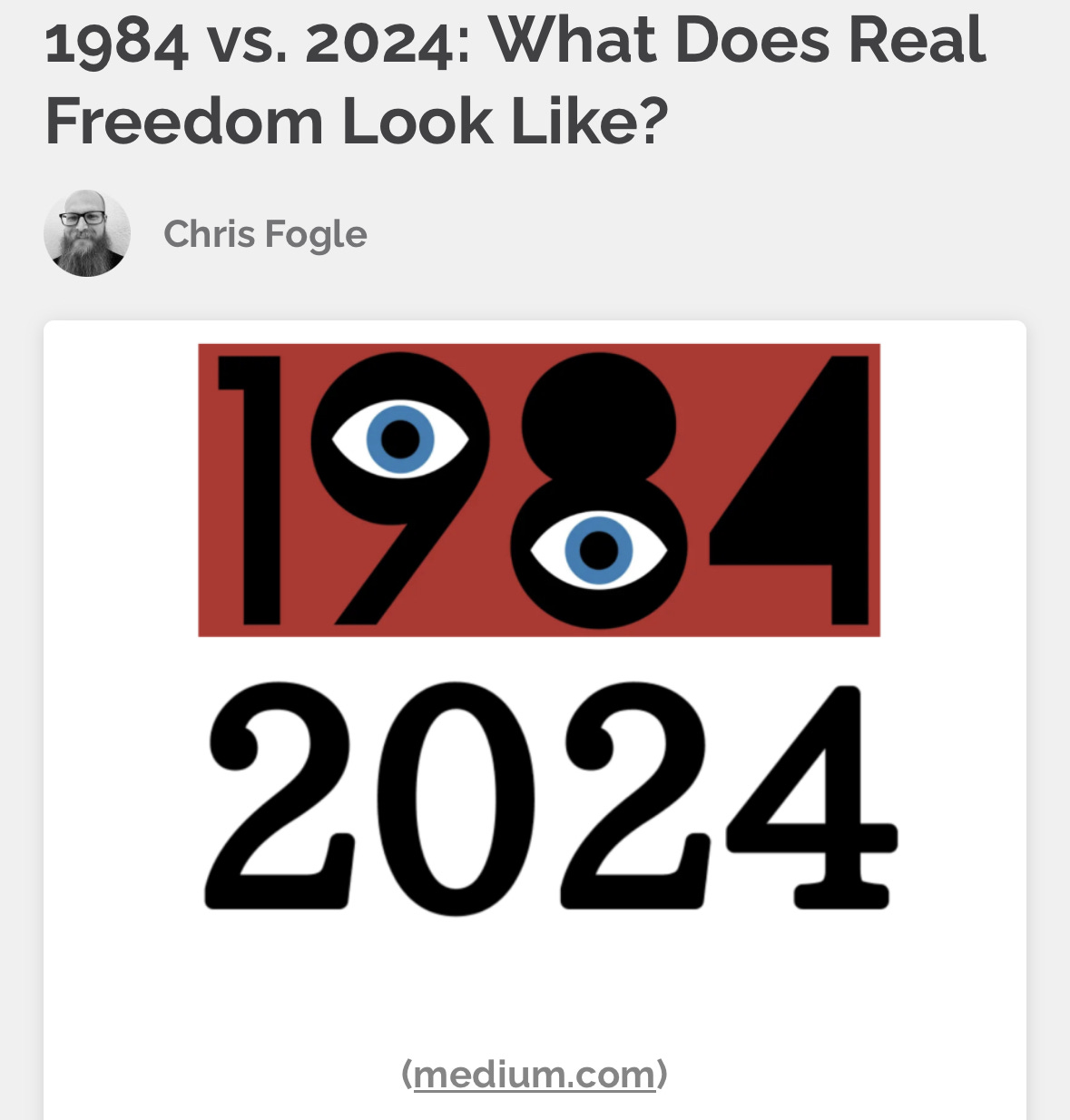Collection of Chris Fogle’s 1980s vs. 2020s Articles
Back in October 2020 I started pitching an article idea comparing each coming year to it’s corresponding ’80s counterpart. I knew nostalgia would play a part but also suspected the ’80s would have a massive effect on the upcoming decade. Not to gloat, but I was right.
Christ and Pop Culture (CAPC) took a chance and agreed to publish. Below are links and summaries to those spiritual, pop culture, and world event comparisons:
1980 vs. 2020: Anxiety We Have Heard on High.
This first article focused on the holidays, deviating from the rest of the series, which broadened the scope. Acknowledging anxieties around the still raw pandemic, I tied back to 1980’s “fears of Stranger Danger, economic uncertainty, crime, and nuclear war.” Comparing some Bible passages, Alasdair MacIntyre’s After Virtue, Cameron McAllister’s thoughts on our illusion of control, Kate Bush and Dolly Parton songs, and a host of other pop culture, we explored healthy solutions to fear and anxiety.
1981 vs. 2021: Searching for Salvation.
As the title implies, the article reviewed how products from both years showed our desperate search for salvation from both death and modern daily life. Comparing Reagan and Trump’s election bids, AIDS and COVID, John DeLorean’s DMC-12 to Elon Musk’s Tesla, music’s condemnation of sex for profit and power, films like Escape From New York and Space Sweepers, and Henri Nouwen’s Making All Things New to Sho Baraka’s He Saw That It Was Good, this article explored salvation on a large scale.
1982 vs. 2022: Greed vs. Giving.
The series’ third entry compared greed and giving in music with Questlove, Michael Jackson’s Thriller (still the best-selling album of all time) and TikTok, Russia invading Ukraine and similarities of early Biden and Reagan years, Moon Knight vs. Moon Knight vs. Moon Knight, and the film industry using cinema like E.T. the Extra-Terrestrial and Good Night Oppy. And finally, using Wayne Watts’ The Gift of Giving and Amy Sherman’s Agents of Flourishing, concluded that the era hadn’t developed into the decade of greed yet in 1982, and asked readers to employ specific solutions of charity in 2022 and beyond.
1983 vs. 2023: When Is Revival Right for America?
Twenty-twenty-three’s actual Asbury revival and the film Jesus Revolution were healthy examples of spiritual revolution being thrust into the cultural conversation. These related to 1983’s Revival, God’s Way! where, unfortunately and incorrectly, revival was intertwined with Christian nationalism and fearmongering. The article explored AI fears in WarGames, Neuromancer and the screenwriters’ and actors’ strikes, doomsday paranoia in The Day After, Jerry Falwell (who, according to Tim Alberta, didn’t believe his own “end is nigh” propaganda), the Barbenheimer phenomenon, and commentary from music like the Cure, Depeche Mode, Enter Shikari, August Burns Red, and Taylor Swift, and books like Kaitlyn Schiess’ The Ballot and the Bible and Ben Chang’s Christ and the Culture Wars. But amidst these and other content, hope for spiritual revolution sprung anew.
1984 vs. 2024: What Does Real Freedom Look Like?
The theme of freedom was viewed through pop culture like Miami Vice, The Cosby Show, Beverly Hills Cop, American Fiction, Cyndi Lauper, Chappell Roan, Run-D.M.C., Beyonce, and were compared to activists like James Cone, Eric Mason, Bill Hull and John Mark Comer. Reflecting on 1984 helped us understand moments in 2024 like the presidential election, feminism, and the possible death of social media. How? What if, although sounding antithetical to freedom, “constraints” were where we found God’s liberation?
MORE TO COME!


